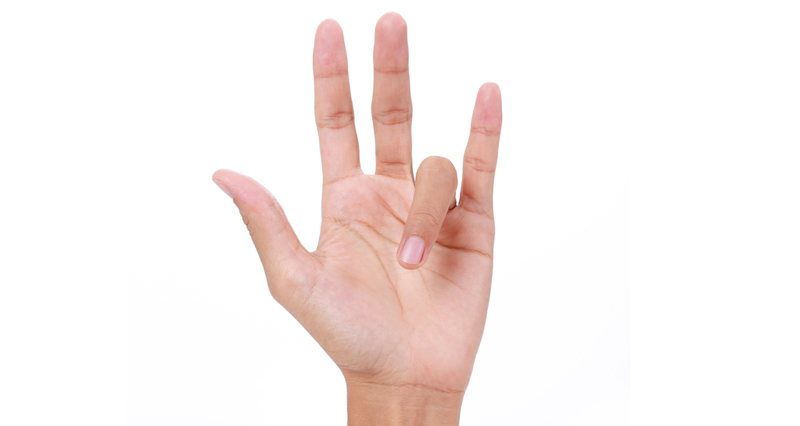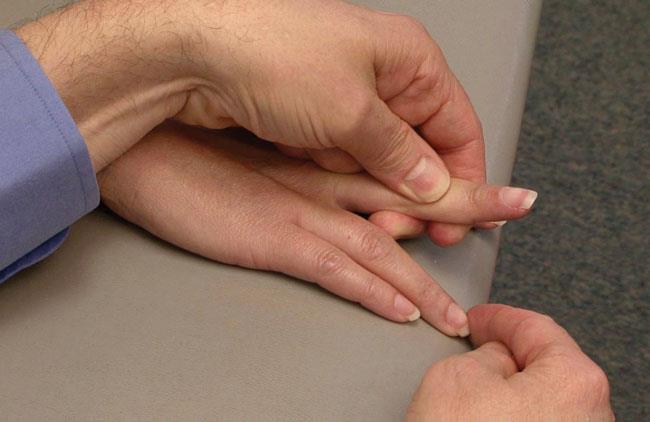Did you know that hand injuries account for the staggering number of emergency room visits each year? Whether it’s a sports-related mishap or a simple household accident, our hands are vulnerable to various injuries. Among those, jersey finger and mallet finger injuries are quite common and can cause significant discomfort and limitations in hand function. Whether you’re an athlete, fitness enthusiast, or someone who values the dexterity of their hands, understanding the difference between these injuries is crucial to seek timely ad effective treatment.
As a hand surgeon, I’ve witnessed firsthand the distress and frustration that individuals experience when dealing with hand injuries, especially malet fingers. The inability to extend the fingertip due to an injured tendon can be debilitating., affecting everyday activities like typing, gripping, objects, or even simply pointing. The pain and inconvenience of a mallet finger deformity can disrupt one’s routine and leave them seeking answers and solutions.
In this article, we delve into the two primary hand injuries- jersey finger and mallet finger, with a specific focus on the mallet finger and its treatment options. Additionally, we touch upon topics such as :
- mallet finger treatment
- Mallet finger deformity
- Mallet finger surgery
- Mallet finger splints
- Mallet finger exercises and much more
So, let’s get started on this journey of understanding and caring for your hands, so you can get back to doing what you love without worry!
Mallet finger vs Jersey finger
Jersey Finger: This injury commonly occurs during sports activities, especially in contact sports like football or rugby, hence the name “Jersey finger”.
It happens when the flexor tendon in the finger gets forcefully stretched or torn, usually when trying to grasp something while the finger is forcibly extended. The result is a painful condition where the finger cannot flex properly
Mallet finger: Unlike the Jersey finger, Mallet finger injuries are often caused by everyday accidents. Imagine accidentally hitting the tip of your finger against a hard surface, like a door or a table, causing the extensor tendon to become damaged or torn.
As a result, the fingertip droops downward and loses its ability to extend fully, giving it a “mallet-like” appearance
So as I mentioned earlier I will be mostly concentrating on the mallet finger injury, so let’s move to the next part
Mallet finger treatment
The treatment approach depends on the severity of the injury, and both non-surgical and surgical options available
Non-surgical Treatment
- Splinting or casting: For minor Mallet finger injuries without fractures or significant tendon damage, non-surgical treatment is often sufficient. The primary focus is to keep the fingertip in an extended position to allow the damaged tendon to heal properly.
A custom-made splint or a cast is applied to the back of the finger, immobilizing the distal joint in an extended position. It is essential to wear the splint consistently, 24 hours a day, for several weeks to ensure healing.
- Continuous Splinting: In some cases, depending on the severity and the location of the injury, the doctor may recommend continuous splinting for a more extended period.
Continuous splinting involves wearing the splint for six to eight weeks, even while bathing or sleeping. This approach ensures maximum protection and minimizes the risk of re-injury during the critical healing phase.
Now let’s look at the mallet finger surgical treatment
Mallet Finger surgery
Surgical procedures typically involve repositioning the bone fragments and repairing the damaged tendon with sutures or pins. Following surgery, a splint or cat will still be needed for a period to support the healing process.
- Open Reduction and External Fixation(ORIF): If the mallet finger injury involves bone fractures or severe damage to the extensor tendon, surgical intervention may be necessary.
During the procedure, the surgeon will make an incision to access the damaged tendon and fractured bones. The bone fragments are carefully realigned, and the tendon is repaired using sutures or pins. In some cases, wires or screws may be used to hold the bone fragments in place until they heal.
- External Fixation; In certain complex cases, external fixation devices may be used to stabilize the injured finger during the healing process.
These devices are attached externally to the finger and provide support and stability while the tendon and bones heal.
External fixation may be considered when internal fixation (such as pins or screws) is not suitable or when additional support is needed for proper healing.
Post Surgery care
Following mallet finger surgery, proper post-operative care is crucial for successful recovery. The patient will typically wear a splint or cast for several weeks to protect the repaired tendon and bones during the initial healing phase. It is essential to follow the surgeons’ instructions on how to care for the surgical site, keep the finger elevated, and attend scheduled follow-up appointments
After the initial healing period, hand therapy and exercises are vital for regaining finger strength, flexibility, and functionality. The hand therapist will guide the patient through a tailored rehabilitation program to optimize recovery.
Mallet finger surgery can significantly improve outcomes for severe injuries and deformities, allowing patients to regain normal finger function and resume their daily activities without limitations. However, as with any surgery, there are potential risks and complications, and it is essential to have a discussion with the hand surgeon about the benefits and potential outcomes before proceeding with surgical options
Remember if a mallet finger is not treated properly it can lead to deformity. Let’s discuss a little bit
Mallet finger deformity
Mallet finger deformity occurs when the extensor tendon of the finger is damaged or torn near the distal interphalangeal (DIP) joint, which is the last joint of the finger. As a result of this journey, the fingertip drops downward and loses the ability to straighten on its own. The affected finger may have a characteristic appearance, resembling a mallet or baseball bat, which gives the injury its name
This deformity can cause functional limitations and aesthetic concerns. The inability to fully extend the finger can affect the hand’s grip strength and make it challenging to perform everyday tasks such as typing, writing, or grasping objects. In addition to functional impairment, untreated or inadequately managed mallet development of arthritis over time.
It’s time to look at some exercises to strengthen the finger, but before that, I would like to invite your attention to the Mallet finger splint used for treatment
Mallet Finger splint

A mallet finger splint, also known as a mallet finger brace or a mallet finger orthosis, is a specialized medical device used in the treatment of Mallet Finger injuries. It plays a crucial role in the non-surgical management of the healing finger by supporting the injured finger and facilitating proper healing of the damaged extensor tendon.
The primary purpose of a mallet finger splint is to keep the fingertip in an extended position, preventing any bending at the distal Interphalangeal joint – the joint closest to the fingertip. By maintaining the finger in this position, the splint allows the damaged extensor tendon to heal without disruption, ensuring that the fingertip does not droop or sag
The splint is designed to be worn on the back of the finger and extends from the tip of the finger to the middle or base of the finger, depending on the severity of the injury. The splint is custom-made to fit the individual’s finger properly, ensuring optimal support and comfort
Types of Mallet Finger Splints:
- Static Splints: Statis splints are the most common type of mallet finger splints. These splints maintain a fixed position, keeping the finger in extension throughout the day and night. The finger is typically held in the splint for several weeks to allow sufficient time for the tendons to heal properly
- Dynamic Splints: Dynamic splints have a spring-like mechanism that allows the finger to move into extension but provides resistance against flexion. These splints are often used in cases where the finger has some ability to extend on its own but needs support to prevent re-injury during daily activities
Mallet Finger exercises
It’s important to note that mallet finger exercises should only be started after the initial healing phase, which is typically for several weeks. Before beginning any exercises, it is crucial to consult with a hand therapist or healthcare provider to ensure that the finger is ready for rehabilitation and to receive personalized guidance tailored to your specific injury and healing process
1. Passive Range of Motion(ROM) exercises:
- Passive ROM exercises involve gently moving the affected finger through its full range of motion using the assistance of your other hand or a therapist.
- The exercise is initially performed with the splint on, gradually progressing to active exercises as the finger heals and gains strength.
2. Active Range of Motion Exercise:
- Active Range of motion exercises involves moving the affected finger without any assistance.
- These exercises aim to improve finger flexibility and strength while gradually increasing the range of motion
3. Strengthening exercise:
- Strengthening exercises target the muscles and tendons surrounding the injured finger
- Examples include finger flexion and extension exercises using resistance bands or therapeutic putty.
4. Finger extension splinting:
- Even after the initial healing phase, finger extension splinting may still be required during certain exercises to support the healing process and prevent re-injury
5. Grip strengthening exercises:
- Grip strengthening exercises involve squeezing a soft ball or putty to improve grip strength and finger function
6. Coordination and Dexterity exercises:
- These exercises focus on improving fine motor skills and finger coordination, which can be affected after a mallet finger injury.
It is essential to perform the exercises correctly and consistently to achieve the best results. The hand therapist will guide you through the exercise program, taking into account your specific injury, healing process, and individual goals. They will also monitor your progress and adjust the exercise as needed to ensure a successful recovery.
Conclusion
I hope this article has provided you with a better understanding of the mallet finger and its related aspects. Whether you’ve experienced a mallet finger injury or simply sought knowledge about this common hand condition, we’ve covered essential topics such as the differences between the Mallet finger and Jersey finger, the causes of Mallet finger deformity, and the various treatment options available.
Remember, timely and appropriate late medical attention is crucial when dealing with hand injuries. Whether through non-surgical methods like splinting and exercises or, in severe cases, surgical interventions, there are effective ways to treat mallet fingers and restore normal finger function
So, if you ever find yourself faced with a Mallet finger injury, don’t fret. Seek professional advice, follow the prescribed treatment plan diligently, and embark on your journey to recovery with a positive outlook. With proper care and patience, you’ll be well on your way to regaining the strength, flexibility, and dexterity of your finger, allowing you to embrace life’s adventure with confidence and ease.

